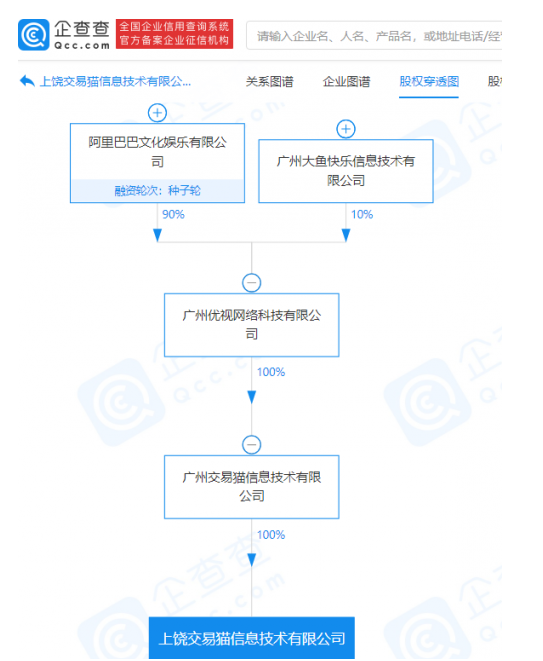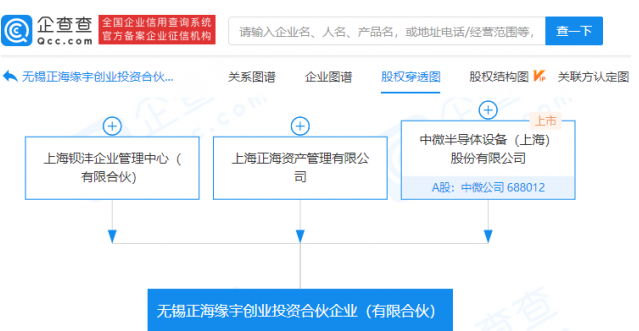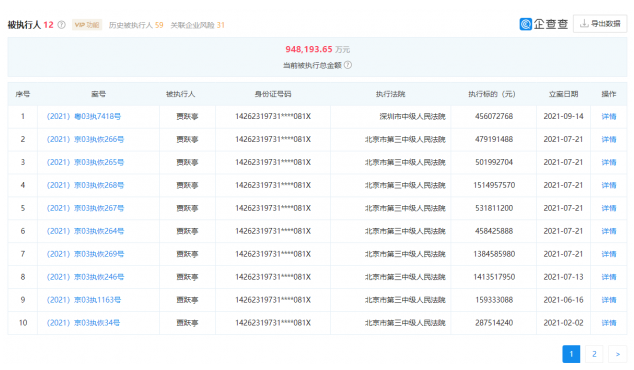环球微资讯!小学六年级的优秀英语教案
教案是教师为顺利而有效地开展教学活动,也全面的根据课程正式完美标准,教学大纲和教科书要求及学生的实际情况,以课时或课题为单位,对教学内容、教学步骤、教学方法等进行的具体设计。下面小编给大家整理了关于小学六年级的优秀英语教案的内容,欢迎阅读,内容仅供参考!
小学六年级的优秀英语教案篇1
教学内容:
1.词汇
 (资料图片仅供参考)
(资料图片仅供参考)
(1)复习关于职业的词汇:doctor, teacher, nurse, cook, fireman, driver, policeman, pilot, singer.
(2)学习生词:astronaut, coach, actor (actress), writer.
2.功能句型
(1)复习询问他人职业及回答:What does he/she do? He/She is a/an …。
(2)学习询问对方将来想要从事的工作及回答:What do you want to be when you grow up?
I want to be a/an …。
教学目标:
1.知识目标
(1)能掌握和职业相关的一些词汇,并能在相应的功能句型中熟练运用;
(2)能在恰当的情景下熟练运用关于询问他人的职业及回答的交际用语;
(3)能在相应的情景下熟练地运用关于询问对方将来想要从事的工作及回答的交际用语。
2.能力目标
(1)通过学习和操练,使学生能掌握本课所学关于职业的词汇,能熟练询问他人的职业及对将来工作的理想,并做出相应的回答;
(2)在学习过程中培养学生发现问题和解决问题的能力,提高自学能力;
3.策略目标
(1)帮助学生学会与人合作,共同完成学习任务;
(2)帮助学生学会观察生活中标的英语,学会借助词典来学习。
4.其他目标
(1)在学习职业名称的过程中了解“感动中国的2003年度人物”,潜移默化地为学生树立榜样;
(2)在小组学习和帮助他人学习的同时,培养学生乐于助人,热爱集体的良好品质;
(3)通过多种形式的游戏和活动,激发学生英语学习兴趣。
教学重点:
1.重点词汇:astronaut, coach, actor (actress), writer.
2.重点句型:What do you want to be? I want to be a/an …。
教学难点:
1.正确朗读和运用关于职业的词汇。
2.正确理解、询问对方对将来工作的理想,并能做出正确的回答。
教具准备:
1.教师准备:多媒体课件,图片,单词卡片,奖励卡片;
2.学生准备:课本,笔。
教学过程:
课前介绍评价方式
Step 1: Warm up and lead in
1. Oral English
2. Sing a song: The Wheels on the Bus.
3. (课件): Look, she is the driver of the bus. Her job is driving the bus. Do you know “job”? 板书Jobs,并介绍课题。
Step 2: Review some words
1. Free talk: What jobs do you know? (Can you act as a …?)
2. Games:
(1) Show some word cards, read and act.
(2) Act, ask and guess---What does he/she do?
Step 3: Presentation:
1. Talk about the great people in 2003.
(1) Watch the screen and think: Who are they? What are their jobs? (通过课件呈现“感动中国”的人物。)
(2) T: They are called the Great People in 2003. 他们是被评为“感动中国的2003年度人物中的几个。Do you know their names?
(介绍6个人物的姓名。学生活动:介绍人物姓名,摆放相应人物的复读机、图片和文字介绍材料。教师示范第一个。)
(3) Watch and listen.
T: What are their jobs? Let’s listen. (课件录音完整介绍6个人物的工作和业绩。)
2. Learn the new word by the students themselves.
(1)示范pair work: Listen, look, match and read. (示范过程中学习生词:coach---c-oa-ch---coach)
(2)学生自学单词,合作完成练习。
T: OK. Boys and girls take out your paper and practice with your partner, please. If there are some new words for you, you can use your dictionary(出示字典), go to listen to the tape or teach each other.
(学生活动:自学不会的单词,合作完成练习。)
(3)学生组内练习介绍一个人物。(学生活动:选择一至两个人物在组内练习介绍。)
3. Introduce them in the front.
T: Who wants to come here and introduce one of them to us? Please listen carefully and check your answers.(学生活动:自愿前来介绍一个人物。)
要求:介绍以后要板书图片;离人物介绍大图较近的学生可以引导用大图片。
4. 相应单词的练习
astronaut:
(1) Pronunciation: astronaut---an astronaut.
(2) Practice (Pass the picture and ask) What does he do? He is an astronaut.
writer:
(1) T: Can you act as a writer? 引导学生练习: writer---writer
(2) T: What other writers do you know?
actor:
(1) T: Who’s your favorite actor? (根据学生的回答介绍:actress)
(2) T: Do you want to be an actor or actress? Why?
5. Learn the sentence patterns.
(1) T: They are all the great people in China. We will always remember them. Do you want to be one of them? What do you want to be when you grow up? You can say: I want to be …。 (出示句卡,带读,板书)
(2) T: What about my daughter? Can you ask her?
(出示句卡,学习问句,板书) want---want to be---What do you want to be---grow up---when you grow up---What do you want to be when you grow up?
(3) 课件:播放录音---妞妞的回答
(4) Practice: Pair work; Show in the front.
Step 4: Reinforcement --- Talk about the most popular job.
T: Excellent! You have so many wonderful dreams for your future job. What is the most popular job in our class? Let’s finish a questionnaire.
(1) Model;
(2) 小组调查;
(3) 各小组填写结果;
(4) 汇总全班调查结果
T: The most popular job in our class is ________. Why do you want to be a/an …?
Step 5: Summary
T: How can you make your dream to be true? What can you do for your dream?
Please remember: Where there is a will, there is a way. (课件呈现)
Step 6: Homework
Talk about your dream job with your parents.
小学六年级的优秀英语教案篇2
教材分析:
本课时主要是通过展示家庭居室结构,让学生学习各个房间的英文名称study, bathroom, bedroom, living room, kitchen. 家是每个学生最熟悉的地方,学生要学会运用本课所学知识来简单描述自己的家,结合学过的语言描述各个房间。
“Let"s do”部分的教学是结合“Let"s learn”中所学过的单词进行扩展,让学生知道一些相关单词的指示用语。让学生在听懂这些用语的基础上,进行模仿和听、做活动。还可设计多种课堂活动,使学生掌握这一部分的内容,同时激发学生学习英语的兴趣。
教学目标:
1.能简单描述自己的房间。
2.能听、说、认读本课主要单词:study, bathroom, bedroom, living room, kitchen,并能在日常生活中运用。
3.能听懂Let"s do中的指示语,并按照指令作出相应的动作。
教学重点:
1、听、说、认读单词:study, bathroom, living room, bedroom, kitchen。
2、学习表示指令的词组。
教学难点:
单词study, bathroom, bedroom的发音。
教学方法:
引导法 启发法 直观教学法
学法分析:
小组合作学习法 讨论学习法 自主学习法
教学过程:
1 Warm-up/Revision
教师引导
1、集体唱英文儿歌。
2、复习上节课所学单词
2 Presentation
1、出示study 的图片,手指着书房里的书问学生:What are they? 教读单词 study, 并板书。
教师用动作帮助学生理解词义:We read the books in the study.
2、按照相同方法,教授单词 bathroom, living room, bedroom.
3、师把第46页Let’s learn部分的挂图贴到黑板上说:This is my home. How many rooms can you see? What are they?
4、教师说指令。
学生回答提问:They are books 并跟老师认读study。
学生依次回答问题并跟老师认读单词bathroom, living room, bedroom.
学生用动作和语言表达句子,并说出相应的房间。
听录音,跟读Let’s do部分。
3 Practice
出示练习题 习题练习并拓展
教学内容与教师的活动 媒体的运用学生的活动 教师进行逻辑选择
教学评价:
1、 学生评价:以小组为单位完成老师所提出的问题,然后进行小组交流,组内进行互评。
2、 教师评价:教师对完成情况进行适当正确的评价,并给与激励性 的语言,手势。
教学反思:
通过本节课的学习,学生基本掌握了所学到的新词,熟读且能理解课文内容,并能够运用到实际情景当中,教者能够利用多种教学方法,提高了学生学习的兴趣,达到了预期的效果
小学六年级的优秀英语教案篇3
教学目标
1、 能够听、说、认读Let’s read部分的短文,完成相应的活动。
2、 能够运用所学语言较好完成“招聘会”的活动。
教学重难点
1、本课重点是操练巩固本单元11个职业名称的单词和重点句型:What does he/she do? Where does he/she work? How does he/she work?
2、本课难点是帮助学生理解短文中的新语言,如:help the bank use their money well. likes helping people. help tourists find their way.以及三个小建议。
教学过程
一、Preparation
(1) Greetings
(2) Let’s chant(课本第56页)
(2)Free talk
预设问题:
How many people are there in your family? Who are they?
What does your father / mother do ?
Where does your father / mother work?
How does your father / mother go to work?
How does your father / mother go to work?
(设计意图:课前chant热身,让学生迅速进入学习状态并复习旧知。通过日常会话,复习巩固本单元主要职业名词及句型,达到温故而知新的目的。)
二、Pre--reading
I.T:Now, I will introduce some my friends to you. What do they do ? Can you guess?
Ss: OK!
T:OK!Let’s meet my first friend. (投影出示卡片: She works in the school. She teaches English in the school. She loves her children very much. What does she do? She is a ___________)
师生一起读卡片上的内容后,让学生猜所描述人物的职业,然后揭示答案。
II.用同样的方法阅读第二个片断.( 投影出示卡片: He works in a car company. He likes math and drawing very much. He can design(设计) many cool cars. What does he do? He is an ______________.)
师生齐读内容,出示单词卡,教读design。之后师问:What does he do ? can you guess?
S3: Maybe he is an engineer.T: Yes, he is an engineer. You are very clever!( 揭示答案)
III.Now, let’s go on , meet my friends. I have many friends. (投影出示卡片: They like beautiful cities. They like traveling(旅游) very much. Who are they? They are ______________)
Can you read the passage? Have a try, please!
(学生试读小短文,教师和学生一起读后,教师说出答案并出示tourists单词卡,并领读。)
IV.投影出示一张城市交通图,在图上标出两个旅行者。
学习本课难点句子:Help the tourists find their way.并引导学生用英语描述路线。
V.出示周杰伦照片,讨论交流信息:
(出示提示句子) Look! I think Zhou Jielun is a singer. He goes to work by car. He likes singing very much. What do you think of Zhou Jielun?(学生看提示语和同位讨论)
(投影卡片内容:
请学生说说自己的想法:I think Zhou Jielun…
投影出示句子。Zhou Jielun is a singer. He goes to work by car. He likes singing very much.
VI.出示另一张照片(教师自己的照片)用同样的方法让学生讨论交流信息。
VII.出示一名银行会计的工作照片。
用同样的方法讨论交流并学说句子:helps the bank use their money well.
投影出示提示:
学生两人一组讨论交流。教师巡视指导,纠正句子中的用词、发音等。
VIII.投影出示刚才的三段短文。Can you read the passages by yourselves? 学生看投影自由阅读。
T:Can you answer these questions? Ask and answer in your groups.
投影出示问题:
1. What does Zhou Jielun do?
2. What does Xiao Hong do ?
3. Who works in a school?
4. Who likes singing?
5. How does Miss Liang go to work?
6. Who help the bank use their money well?
教师提问投影上的问题,学生抢答。
(设计思路:通过先阅读部分与课文相似的片段,引出文中的难点句子,进行教读、理解。排除阅读障碍,降低阅读难度。并且用反复出现的方式操练重点句型。)
三、In—reading
(1) 略读。简单回答问题
学生打开课本,自由阅读课文。教师巡视指导。
参考问题:
A. How many friends do we have?
B. Who are they?
C. What do they do?
(2) 细读
逐段阅读,根据短文内容判断:
第一段:
A. Wang Li is an engineer.
B. She likes reading English very much.
C. She designs many cars and buses.
D. She goes to work on foot.
第二段
A、 Li Xiaobin is a policewoman.
B、 He works is a hospital.
C、 He helps the bank use their money well.
D、 He goes to work by bus.
第三段:can you answer my questions?
A、What does Yuan Yuan do?
B、What does Yuan Yuan like?
C、How does Yuan Yuan go to work?
T: (学生口头回答上面三个问题后)
(设计思路:通过简单判断,给与学生阅读的自信。就短文的内容提出yes-no等的简单问题,让学生带着问题阅读并通过快速阅读理解语篇的大意)
(3) 读写
Let’s read all the passages together, OK?(齐读全部课文一遍)
Now questions for you? can you answer the questions on your English books?
Ask and answer in your groups, then write the answers on your English books.
学生读短文完成文后问题,教师巡视指导。
教师借一个同学的课本,投影展示答案。
(4)听录音,跟读课文。
(5)自由朗读课文,品味语感。
(设计思路:通过阅读解决语篇内的主要内容,让学生回答有一定思维深度的问题检测学生理解程度。培养学生获取信息、处理信息的能力。然后通过做课本上的问答题落实到写上。)
四、Post—reading
T: Look! there are three tips here.(课前将文中的三条建议贴在黑板上)
老师读完三条建议后说:I want to be a singer, because I like singing very much. What about you?
S1: I want to be a teacher, because I like children.
T: Thank you. What else?
S2: I want to be an accountant. Because I like math very much.
T: Thank you. What else?
S3: I want to be a teacher, because I like students.
T: Thank you. What else? What about you?
S4: I want to be an English teacher. Because I like English very much.
(设计思路:将书上学到的知识运用于真实的生活场景之中,并得以拓展。体现了用英语的思想。)
五、Progress
(1)T: Now you are the managers in the many companies, and you need somebody work for your company. 请你根据你们公司的工作性质,到人才市场去聘用一些人员为你的公司服务。(课前在学生的桌子上分好小纸条,上面写着虚拟身份的相关信息,每组为一个公司。)
(2)教师示范在求职介绍中找到自己需要的人才,并用英语表述理由。
Zhang Yong is a happy man. He likes helping the sick(病人)people.He likes white.
He wants to be a doctor. So I choose Zhang Yong. Because he wants to be a doctor, and Yongxin hospital needs a doctor.
I work in Yongxin hospital. I choose Zhang Yong. Because Yongxin hospital needs a doctor. And Zhang Yong wants to be a doctor.
Can you tell me? What about you?
Now you can stand up and look for the personnel for your company. OK?
(3)学生以小组为单位在教室内寻找、阅读求职信息,在小组内讨论并寻找自己所在公司需要的人才。试着用英语表述聘用原因。教师巡视指导。
(4小组推举一名代表介绍自己聘任的人员并说明理由。在班内介绍。
(设计思路:设置扩展活动,让学生在真实自然的任务型活动中扩展运用阅读信息。)
(5)T: Boys and girls, toady, it’s very difficult to find a nice job. So we must work hard, and make a new day. OK?
Ss: OK!
(设计思路:通过创设一次招聘会的场景,让学生在相对真实的语境中运用所学英语。同时也培养了学生用英语思辨的能力,真正做到“用中学,学中用”。)
小学六年级的优秀英语教案篇4
教学目标
1. 能够听、说、认读Let’s read 部分的短文。
2. 能够听懂和读懂Story time部分的对话,并能够给老师讲解出来。
3. 能够了解音标的音和形,并能进行区分。
4. 能够仿照Let’s read 部分的植物日记自己写日记。
教学重难点
重点 : 掌握Let’s read部分的内容和音标,理解Story time部分的内容。
难点 : 帮助学生参照Let’s read部分自己写植物日记。
教学过程
Step 1:Warm up
1. Greeting.
2. 活动:春夏秋冬 教学预设:植物的生长离不开季节的变换。要让学生更直观的了解植物的生长顺序,所以我以季节的美丽图片开始,激发学生学习的兴趣。 老师向学生展示春夏秋冬司机的美丽风景图,春天的生意盎然,夏天的阳光明媚,秋天的金风送爽,冬天的银装素裹,并说:Winter is my favourite season. Which is your favourite season? 老师分别拿出几幅图出来让学生判断分别是哪个季节?
老师总结:In winter, people put the seeds in the soil. In spring, the seeds sprout. In summer, they become big plants. And in fall, the have fruits. 设计意图:用春夏秋冬的变幻帮助学生领会植物一年的生长过程,并为下面总结植物的种植顺序和生长顺序做铺垫。
Step 2:New concepts
1. 活动一:小组活动 教学预设:让学生回答How do you plant a tree?这一问题,有点难度,教师应该首先进行示范。
Let’s play
(1) 老师拿出四张图片,分别印有种子、浇水、发芽、和大树,并依次让学 生描述。用“It is a seed…..”
(2) 老师让学生分组做书上74页的练习:由4到5人一组进行问答,学生依 次描述Let’s play 部分的图,然后将其总结,如:How do you plant a tree? 设计意图:采用小组协作的方式共同完成Let’s play部分增强学生的团体合作精神,能更进一步了解植物的有关步骤。
2. 活动二:植树日记 Let’s read 教学预设:学生首次学习植物日记的写作,教师应该带领学生一段一段地学习Let’s read部分,详细讲解日记的格式。
(1) 老师播放幻灯片,展示植树日记。
(2) 老师提出问题让学生回答: On April 15, what does she do? What happened to the seed on April 21? What does Liu Yun see on April 29? Why does she water it everyday? What happened after one month?
3. 活动三:发音练习 教学预设:教师应该培养学生自己总结发音的能力,当学生碰到新音标不会读的时候,老师就教授新的音标。
(1)老师挂出国际音标图,开始复习以前学过的国际音标,让学生依次读出以前学过的音标。
(2)老师引导学生运用刚学的音标读出语音部分的单词,并让学生体会这些单词发音的不同,指导学生完成连线题。
设计意图:用学过的就音标引出学习,以旧引新,并完善学生的国际音标图,将其作为一个整体来学习和记忆。
Step3: Consolidation and extension Story time
教学预设:故事很有趣味性,但如果只让学生听和理解,那么激不起学生的兴趣,不妨让学生分角色演一演。
(1) 老师带领学生听录音,一起读故事的内容,并适当提问让学生回答,如: What does Zip want to do?
(2) 等学生掌握了短文的大意之后,让学生和老师交换彼此的角色,让学生 当老师,给老师讲解这个小故事的内容,老师最后总结。
Let’s chant
Seed,seed,we should have the seeds.
Soil,soil, put the seeds into the soil.
Water them, water them,
You can see a sprout,
Water them, water them,
In several days, you can see a plant.
设计意图:让学生当老师来教授,一方面训练学生的口头表达能力和应用能力,另一方面让学生体会当教师工作的辛苦,增进师生的情谊。
Step 4: Homework
1. 按照音标写出下列单词,并翻译出来。
2. 你们小组的植物长的怎么样了?写一篇关于植物的日记。
板书设计: 1.How do you plant a tree?
First, dig the soil. Then put the plant in the soil. Water it. Wait for it to grow. 2. [ts] [dz] [tr ] [dr] [α:] shorts towards trough draw [α] pots odds tropic drop
小学六年级的优秀英语教案篇5
Teaching aims and demands:
1、Learn the words & phrase: theatre,cinema,watch.
2、Can master the sentence “ Let’s go to …”.
Teaching methods:
games, reading, action, etc.
Period I
Content of courses:
Teaching aims and demands:Be able to master the words: theatre,cinema,watch.
Educational affiliations:
textbook, tape, tape-recorder, and word cards.
Teaching-learning process:
Step 1 Warm-up activity
1、Greeting.
2、Let’s play: Look and guess: What is it?
Step 2 Presentation&drill
1、Learn to say: picnic
T help Ss understand the meaning. Read the word after T.
2、Learn to say: library
T help Ss understand the meaning. Read the word after T.
3、Learn to say: watch science story in the same way.
4、Drill.
(1)T shows the pictures and Ss say the words.
(2)T shows the pictures quickly and Ss say the words.
(3)A guessing game.
4、Open the books at Page 10, listen to the tape and read after it.
Step 3 Practice.
1、Practice in four. Ss play the cards.
2、Listen&act.
Step 4 Consolidation.
Period II
Content of courses:
textbook Part A Part C.
Teaching aims and demands:
Be able to understand and tell the story.
Educational affiliations:
textbook, tape, tape-recorder, word.
Teaching-learning process:
Step 1 Warm-up activity
1、Exchange greetings.
2、Sing a song we’ve learned last term together.
Step 2 Presentation&drill
1、Lead-in.
T shows the picture of Part A.
T says, “The children are talking. Listen to the tape. What are they talking about?”
T writes the sentence on Bb and help Ss understand the meaning. Read the sentence after T.
2、Ss talk about the picture.
3、Drill.
(1)T shows the pictures and Ss rearrange them.
(2)T shows the pictures and Ss tell the story.
(3)A guessing game.
4、Open the books at Page 9, listen to the tape and read after it.
Step 3 Practice.
1、Fill the blanks with the correct words.
Go/and/did/was/home list
Yesterday_________a holiday. The children wanted to _________out. They did not want to stay at_________. Peter wrote a _________in his notebook. The children had many ideas.
They talked_________talked. It was very late in the afternoon.They_________ nit go out. They stayed at home all day!
2、Ss practice in four.
3、A game:A competition among groups.
Period III
Content of courses:
1、Teaching aims and demands:
Be able to read and write the sentence ” Let’s go to…”.
2、Educational affiliations: textbook,tape,tape-recorder,word.
Teaching-learning process:
Step 1 Warm-up activity
1、Exchange greetings.
2、Sing a song we’ve learned last term together.
Step 2 Practice
1、Lead-in.
(1)T shows the picture of Part D.
(2)T says, “What are these place?
2、Pair work. Look at pictures. Say the words of the pictures.
3、T writes the words on Bb and help Ss understand the meaning.
Read the sentence after T.
4、Say the felling words..
5、Make the sentences.
e.g.I’m hungry. Let’s go to the restaurant.
6、Open the books at Page 11.
Ss write the sentences on the book.
小学六年级的优秀英语教案篇6
一、教学内容:Let’s read Let’s sing story time
二、教学目标与要求
1、能综合运用动词的过去时。
2、 阅读理解故事
三、教学重点
1 、动词过去时的读音及不规则动词的变化
2 、阅读部分的理解和有限度地再现
四、教学难点
1 、动词过去时的读音及不规则动词的变化
2 、阅读部分的理解和有限度地再现
五、课前准备
1、教师准备一幅本课时的教学挂图。
2、教师准备一台录音机和相关录音带。
3、学生准备本课时的单词卡片。
六、教学过程
1、Warm-up
Sing the song: at the zoo
2、Presentation
A: Activity 1 Memory testing
What did you do last weekend?
I went shopping.
I went shopping and visited grandparents
I went shopping and visited grandparents………
B: Activity 2 比一比,谁说得最快。(见表格1)
请两个学生上来,背向黑板,教师说出表格中任意一个词组,学生就说出与之对应的词组,败者换其他人,再与胜者比赛,看看全班谁说得最快。
C: Text A. 看图跟读课文。
B. 教师提示总结:
was / walked / studied / read /went
/saw / jumped / swam / returned
D: Activity 3 无字的故事书
E: Exercises
(1)Finish the sentences
(2)Number the sentences
Comprehensive activity
story time
1、Two students a group and discuss the story.
2、Ask the questions:
(1)What did Zoom do on Saturday?
(2) What did Zoom do on Sunday?
3、 Listen and read the story
小学六年级的优秀英语教案篇7
一、教学目标与要求
1.能够听、说、认读句子:What is your hobby? I like collecting stamps·
2.能够听、说、读、写动词短语的ing形式:collecting stamps,riding a bike,diving playing the violin,making kites。
二、教学重、难点分析
1.本课时的教学重点是掌握五个动词(短语)的ing形式。
2.本课时的教学难点是拼写:riding,diving,making。
三、课前准备
1.教师准备录音机及录音带。
2.教师准备A部分Let"s learn的单词卡片。
3.教师准备一些树叶、一本集邮册、两只风筝。
四、教学步骤和建议
1.热身(Warm-up) 出示学过的词组,教师问:Look,which thing do you like?I like go shopping and read books.what about you ?引导学生回答。出示句子:What is your hobby?解释hobby,领读,出示词卡,放在黑板上。继续操练句子:what is your hobby? I like …….
2.预习(Preview) “滚雪球”游戏 教师问一名学生的爱好,紧接着再问一名学生,并要求后面的学生也要说出前一名学生的爱好,如:“I like collecting leaves.He likes taking pictures.依次类推,看谁说出的句子最多。
3. 新课呈现(Presentation) + Let"s learn
(1)教师边做动作边说自己的业余爱好:“I like playing the violin.What is your hobby?”引导学生回答:“I like…”教师板书:What is your hobby? I like playing the violin.指导学生拼读hobby,playing the violin并进行问答操练。
(2)教师拿出集邮册,从里面取出一张邮票,问学生:“What"s this?”引导学生回答:“It"s a stamp.”教师板书stamp并带读。教师展示集邮册,同时说:“I like collecting stamps.”然后板书并带读collecting stamps。教师问:“Do you like collecting stamps?”,引导学生作答后拼读并操练:I like collecting stamps.
(3)教师做骑自行车的动作,问:“What am I doing?”学生猜:“You’re…教师说:“Yes,I am riding a bike.I go to work by bike every day.I like riding a bike.教师板书:tiding a bike,指导学生拼读,告诉学生riding是tide去掉结尾不发音的e再加上ing。
(4)教师出示一只风筝,问:“What"s this?”引导学生回答:“It"s a kite.”教师出 示两只风筝,问:“What are they?”引导学生回答。接着教师做放风筝的"动作,问:“What am I doing?”学生回答:“You’re flying a kite.”教师回答:“Yes,I like flying kites.I can make kites.I like making kites,too.”然后出示making kites的单词卡片,问:“What"s he doing?”引导学生回答:“He’s making kites.板书:making kites,学生拼读,注意making的拼写。
(5)教师出示diving的单词卡片,问:“What is he doing?”引导学生回答:He"s diving.教师板书:diving,学生拼读,注意diving的拼写。
(6)教师手指板书,学生齐拍手练习说句子,如:What is your hobby? What is your hobby? Playing,playing,I like playing the violin.Collecting,collecting,I like collecting stamps.Riding,riding,I like riding a bike.Making,making,I like making kites.Diving,diving,I like diving.
(7)教师放Let"s learn部分的录音,学生跟读。教师出示 Let"s learn部分的单词卡片,学生根据单词卡片内容进行问答操练:What is your hobby?I like-- (8)“猜一猜”游戏 学生拿出A Let"s learn部分的单词卡片。同桌一组,每人抽出一张单词卡作为自己的爱好,一人猜:“You like…”另一名学生根据手中卡片上的内容回答:“Yes/No.I like…”两人可进行积分比赛,猜对卡片上的内容就得到这张卡片,最后看谁手里的卡片最多。 Group work 学生带好纸笔在组内进行调查,互相询问:‘".What is your hobby?"’调查完毕,各组派代表上台汇报调查结果:“…boys/girls like…”也可说出名字,如:“一and…like…”若课上时间不够,可将调查活动放到课后进行,下一节课汇报,建议教师指导学生自己做个简单的调查表,边调查边填写表格。
4. 巩固和延伸(Consolidation and extension)
(1)让学生做本单元A Let"s learn部分的活动手册配套练习。
(2)让学生听Let"s learn部分的录音,读给家长或同伴听。
(3)让学生背诵并抄写本课四会动词(短语)。










